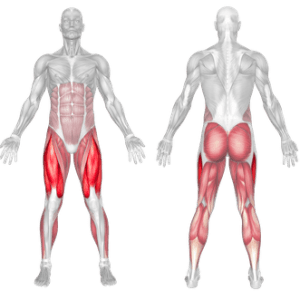Overview
By elevating the treadmill deck, it simulates uphill walking or running. Most treadmills have adjustable incline settings, typically ranging from 0 to 15 percent. Using an incline activates more muscle groups, increases caloric expenditure, and helps improve cardiovascular fitness.
How to do Perform:

Start by warming up with 3 to 5 minutes of flat walking.
Gradually increase the incline between 5 and 12 percent, depending on your fitness level.
Maintain a steady walking pace or light jog while keeping your posture upright.
Avoid leaning forward, and let your glutes and hamstrings do the work.
Use the incline for 15 to 30 minutes, then lower it and cool down for 3 to 5 minutes.
Tips for Proper Form
Keep your chest up and shoulders relaxed to avoid strain.
Look straight ahead, not down at your feet.
Shorten your stride slightly as the incline increases.
Swing your arms naturally to maintain rhythm and balance.
Avoid holding onto the handrails, which reduces muscle activation.
Common Mistakes
Leaning forward excessively, which can strain your lower back.
Gripping the rails too tightly, reducing lower body engagement.
Using a high incline for too long, especially when fatigued.
Skipping the warm-up or cooldown, which increases injury risk.
Setting incline too steep, compromising walking or running form.
Benefits of the Incline Treadmill
Burns More Calories: Walking on an incline increases intensity and calorie burn without speeding up.
Targets More Muscle Groups: The glutes, hamstrings, and calves are more active during incline walking.
Low-Impact Option for Cardio: Incline walking is gentler on joints compared to jogging or sprinting.
Boosts Cardiovascular Endurance: Uphill walking raises heart rate, improving aerobic capacity and stamina.
Improves Posture and Core Strength: Proper incline posture activates core muscles and enhances spinal alignment.
Enhances Fat Loss Potential: Greater muscle engagement means higher energy expenditure, supporting fat loss.
Functional Carryover to Outdoor Terrain: Strengthens muscles used in hiking and walking uphill in real-life scenarios.
How to Incorporate Into Your Routine
- For Beginners: Walk at 3 to 4 mph with a 5 percent incline for 15 to 20 minutes.
- For Fat Loss: Use incline intervals (5 to 12 percent) for 30 to 45 minutes, 3 to 5 times weekly. (For example: 12-3-30 workout)
- For Endurance: Maintain a steady incline walk or jog for 30 to 60 minutes at moderate intensity.
- For Strength and Conditioning: Perform hill intervals or long incline walks with added ankle weights.
- For Functional Fitness: Add incline treadmill walking into circuits for lower body and core endurance.
- For General Fitness: Include incline walking 2 to 3 times weekly after resistance training or as active recovery.
- For Mobility and Recovery: Walk at 2 to 3 mph with a mild incline (3 to 5 percent) to support circulation and mobility.
Incline Treadmill Muscles Worked

Frequently Asked Questions
Is incline treadmill walking better than flat walking?
Yes, it burns more calories and engages more muscles without increasing impact on the joints.
What incline should I use for fat loss?
Start with 8 to 10 percent incline and walk briskly for 30 minutes to maximize fat burning.
Can incline walking replace leg day?
No, but it complements strength training by improving muscular endurance and conditioning.
Is incline treadmill good for beginners?
Yes. Start slow and low, and gradually increase the incline as your endurance improves.
